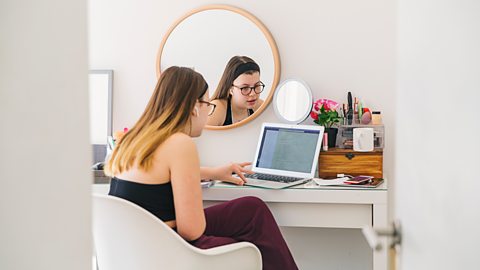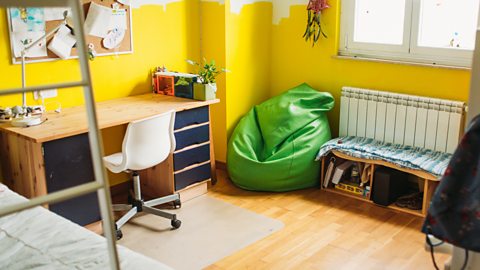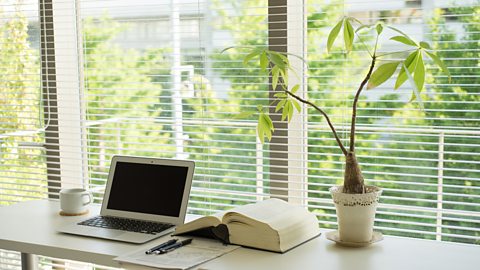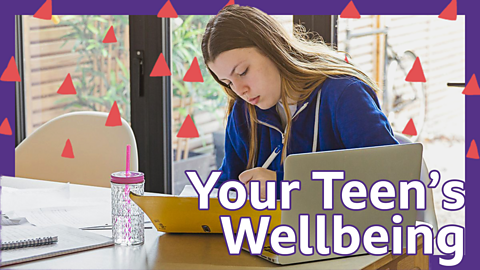It can be difficult to find a bit of free space at home, especially if you want peace and privacy to study or work. Maybe your child is set up in the corner of their bedroom, maybe you have to work remotely under the stairs, in the attic, or maybe you're lucky enough to find a tiny spare room. After a while in these cramped conditions, the family could, understandably, be feeling a little frustrated.
Here are some tips and tricks to transform your small space into a bright and breezy work station.

Magic mirrors

This is the one tip anyone will tell you when youŌĆÖre dealing with small spaces ŌĆō and with good reason. A well-placed mirror will reflect light and brighten your room considerably, which is ideal if you have to deal with a poor light source, such as a small window.
Mirrors also create the illusion of added space, which, illusion or not, can really make the difference when you are spending the best part of the day shut away. If you can place two mirrors on opposing walls, that's even better. Not only will that create an infinity reflection for mindless entertainment, it will also trick your mind into thinking that the space between the two walls is wider!
The less space these mirrors take up, the better, so hanging them on the wall is ideal, but you will find any number of shapes and sizes to fit the space you have.

Lighten up

A well-lit room will make it feel more open and spacious. Natural daylight is best, as itŌĆÖs a real booster for your wellbeing, so have a think about your windows.
Try to avoid putting things on the window sill. The fewer objects that are blocking light from coming into the room, the better. With that in mind, make sure your curtains or blinds are open as wide as possible, or even take them off of the rail during the day if thatŌĆÖs easily achievable. While youŌĆÖre at the window, open it up and let in a little fresh air (weather permitting). Small, closed spaces can feel stuffy and stale after youŌĆÖve been in there for a while, so a good airflow is important too.
If your room doesnŌĆÖt have a window, you can still make the most of the lighting available to make the room feel more spacious. Try to create as much light as possible, while taking up as little space as possible ŌĆō for this, spotlights or desk lamps, which only direct light in one specific area, arenŌĆÖt as good as lamps which spread light over the entire room.

A place for everythingŌĆ”

Some workers thrive in tidiness, others thrive in disorder - that comes down to you as an individual, but, if you are feeling constricted in your working space, taking the time each day to tidy away clutter and mess will help to make it feel a little bigger. Here are some easy ways to help you achieve this.
Firstly, keep a bin nearby so your rubbish isnŌĆÖt loitering any longer than it needs to. Then, find storage for all of the little things you need for work - like notebooks, stationery, or computer accessories - and try to put them away when you are finished with them. It might only seem like a small thing, but itŌĆÖs cutting down on visible clutter and giving you a bit more space to stretch out into.
To keep a tidy workspace, you could also try to cut down on paper notes and stick to digital as much as you can; and use trunking or tapes to keep any wires youŌĆÖre using compact and hidden.

Choose one potted plant

If you have been looking online for interior design inspiration, you may have noticed that itŌĆÖs particularly fashionable at the moment to fill your home with as many ferns, spider plants and money trees as possible, to create your own mindful ŌĆśgreen spaceŌĆÖ.
As tempting as it might be, this isnŌĆÖt a great idea for a small room- adding multiple small to medium houseplants, even if theyŌĆÖre pretty ones, is still clutter to your subconscious eye! A far better idea is to have one tall houseplant, two at the very most.
Not only will this cut the clutter, the verticality of a tall houseplant draws the eye to the ceiling and helps you to appreciate the full space of your room. A cheese plant, for example, is relatively inexpensive, nice to look at and doesnŌĆÖt need too much maintenance to grow to a decent size.

Colour is key

So youŌĆÖve already de-cluttered your space, youŌĆÖve filled it with light and youŌĆÖve got a nice breeze coming through ŌĆō now you need to think about colour.
HereŌĆÖs some basic interior design advice ŌĆō lighter colours (white is best) make a room feel airy and spacious, whereas darker colours make it feel close and cosy. For a small working station, youŌĆÖre going to want to focus on lighter colours to counterbalance the lack of physical space.
If your walls are a darker colour, you may want to consider wallpapering or painting them, especially if you are going to be working in there for the long haul, but, if youŌĆÖre unable to do so, there are easier ways to keep your space light!
If the floor of your room is dark, you could try a lighter rug, or if you have dark furniture, you could add a nice, bright throw.
ThatŌĆÖs not to say darker colours donŌĆÖt have their place in your space, in small doses ŌĆō in fact the contrast of a dark object in your lighter room can actually add to the illusion of depth!

More from │╔╚╦┐ņ╩ų Bitesize Parents' ToolkitŌĆ”
Parents' Toolkit
Fun activities, real-life stories, wellbeing support and loads of helpful advice - we're here for you and your child.

How to support your teen as they decide on their future career
Career coach Mark Anderson has advice for parents of teens who are choosing their options at GCSE or are nearing the world of work.

CanŌĆÖt sleep, wonŌĆÖt sleep? Five ways to get your childŌĆÖs sleep back on track
Advice and tips on helping your kids into healthier sleep patterns

Six self-care tips for parents
Consultant Clinical Psychologist Dr Roslyn Law offers advice on how to take care of your own wellbeing as well as that of your kids.


